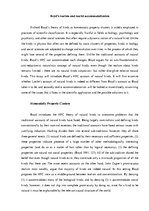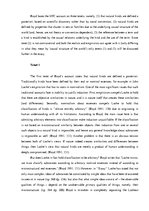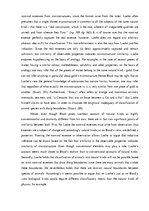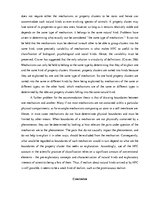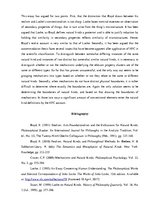-
Boyd’s Realism
Conclusion
This essay has argued for two points. First, that the distinction that Boyd draws between his realism and Locke’s conventionalism is too sharp. Locke bases nominal essences on observation of secondary properties of things, that in turn arise from the thing’s microstructure. It has been argued that Locke, as Boyd, defines natural kinds a posteriori and is able to justify induction by holding that similarity in secondary properties reflects similarity of microstructures. Hence, Boyd’s realist account is very similar to that of Locke. Secondly, it has been argued that the accommodation thesis faces several issues that have become apparent after application of HPC in the scientific classification. To distinguish between somewhat differing instances of the same natural kind and instances of two distinct but somewhat similar natural kinds, it is necessary to distinguish whether or not the mechanisms underlying the relevant property clusters are of the same or different types. So far that has proven unsuccessful, and the only way out seems to be grouping mechanisms into types based on whether or not they relate to the same or different natural kinds. Secondly, when mechanisms do not have distinct physical boundaries, it is rather difficult to determine where exactly the boundaries are. Again the only solution seems to be determining the boundaries of natural kinds, and based on that drawing the boundaries of mechanisms. In those two ways a significant amount of conventional elements enter the natural kind definitions by the HPC account.
…
Boyd’s Realism and Realist Accommodationism Darbā skaidrots Ričarda Boida piedāvātais homeostātiskais klasifikācijas modelis bioloģijā u.tml. zinātnēs, dažas no tā izrietošas problēmas, un kritizēts Boida uzstādījums, ka homeostātiskais modelis ir krasā pretrunā ar Džona Loka piedāvātajiem klasifikācijas principiem.

